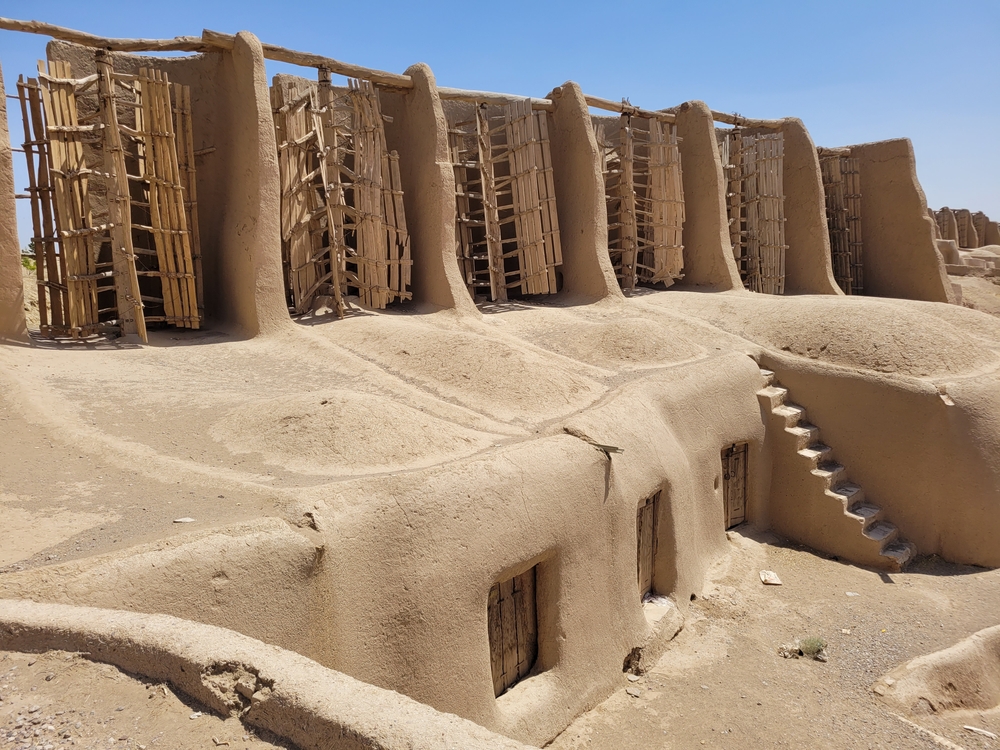How Ancient People Used the Power of the Wind and Sun
Posted on Categories Discover Magazine

Ever since the Industrial Revolution, civilization has been powered mostly by fossil fuels. But what sources of energy did ancient civilizations use, and how sustainable were those?
How Ancient Civilizations Harnessed Solar Energy
The most ubiquitous and renewable source of energy is, of course, the sun. People have long used solar energy — and not just for growing crops. According to Let It Shine: The 6,000-Year Story of Solar Energy by John Perlin, excavations of Neolithic Chinese villages show that the villagers built their homes with the only opening facing south to allow in the low winter sun, and with overhanging thatched roofs to keep out the higher summer sun. By 4,000 B.C.E., the Chinese were studying the movement of the sun relative to Earth and refining their solar building techniques.
The ancient Greeks made good use of passive solar design as well. None other than Socrates was an early promoter of solar architecture, even going so far as to hold classes, teaching his students the basics of passive solar design. Perlin writes that 2,500 years ago, most Greek homes were heated by the sun. The ancient Romans used these principles as well. When wood became scarce through deforestation, the Romans published books instructing people how to use solar energy so they could save what little wood was available.
Together with wood, ancient cultures used the sun to cook their food. At least as long ago as the time of Confucius, and possibly earlier, Chinese households used concave mirrors to focus sunlight onto kindling to light cooking fires. In wealthier homes, explains Perlin, they captured waste heat from these cooking fires and used a flue to divert it to a kang, a sleeping platform made of materials with excellent heat absorption properties, such as brick or adobe. Once warm, the kang would radiate heat throughout the night, keeping sleepers cozy.
The sun can’t do everything, though. Rozenn Bailleul-LeSuer, an Egyptologist at SUNY-Brockport, points out that despite the use of concave mirrors in China, wood was the most common source of fuel in the ancient world. But Egypt, being a desert, was not rich in wood. The Egyptians, utilizing the limited resources they had, made charcoal, she says, which is a more efficient way to use wood for heating. They also burned animal dung and dried vegetable matter, such as straw, as an alternative fuel when wood was not available.
Read More: From Growing Crops to Cooking Food, Fire Shaped Ancient Civilizations
Early Uses of Wind Power
Ancient peoples harnessed the wind, too. In ancient China, windmills were used to power water pumps. In ancient Persia, in what is now eastern Iran, windmills, called asbads, captured the shamal, strong winds from the north that blow continuously during certain parts of the year and used them to turn gears to grind grain.
The Egyptians understood wind, too, and used it to navigate the Nile River. The Nile, the world’s longest river, flows from south to north. However, the prevailing winds there blow from north to south. Sailing south with the wind, Egyptian workers could travel to work in mines and quarries in the south of the country. Then, the heavy resources from the mines and quarries, gold and granite, for example, could be floated back north on the current. “It’s no surprise,” says Suzanne Onstine, an Egyptologist at the University of Memphis in Tennessee, “that the capital is in the north because it’s the endpoint for all of those products coming from the south.”
It’s also no surprise that ancient civilizations used sun and wind as fuel, concepts we tend to think of as modern and innovative. “They were very keen observers of nature and very clever at harnessing all of the resources in their environment,” says Onstine. “If you’re observing nature at that sort of level, the possibilities are extremely varied for how you can solve life’s problems.”
Read More: These 5 Modern Inventions Actually Have Ancient Roots
Article Sources
Our writers at Discovermagazine.com use peer-reviewed studies and high-quality sources for our articles, and our editors review for scientific accuracy and editorial standards. Review the sources used below for this article:
Avery Hurt is a freelance science journalist. In addition to writing for Discover, she writes regularly for a variety of outlets, both print and online, including National Geographic, Science News Explores, Medscape, and WebMD. She’s the author of Bullet With Your Name on It: What You Will Probably Die From and What You Can Do About It, Clerisy Press 2007, as well as several books for young readers. Avery got her start in journalism while attending university, writing for the school newspaper and editing the student non-fiction magazine. Though she writes about all areas of science, she is particularly interested in neuroscience, the science of consciousness, and AI–interests she developed while earning a degree in philosophy.